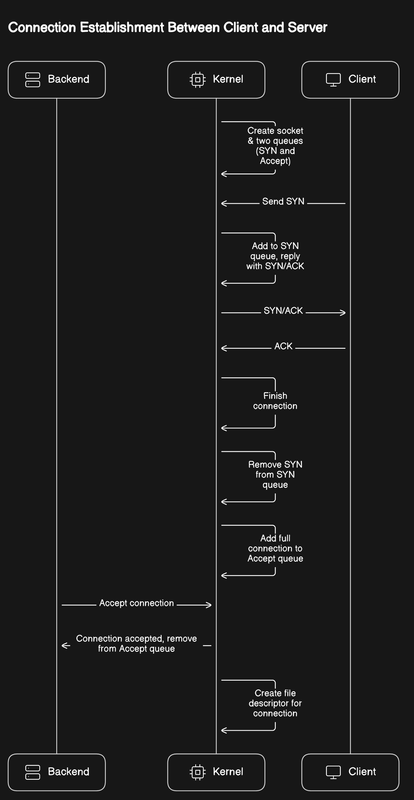
Demystifying TCP Connection Establishment: A Deep Dive for Developers
In the world of software development, understanding the intricacies of network communication is pivotal. One of the foundational aspects of this domain is how a TCP (Transmission Control Protocol) connection is established between a client and a server. This process, often glossed over, is crucial for developers to grasp, as it underpins the reliability and efficiency of networked applications. Let's delve into the TCP three-way handshake, explore what happens behind the scenes, and address common problems with accepting connections.
The TCP Three-Way Handshake Explained
The TCP three-way handshake is the protocol's method of establishing a reliable connection between a client and a server. It involves three steps:
- SYN: The client initiates the connection by sending a SYN (synchronize) packet to the server, indicating the start of a TCP connection.
- SYN-ACK: The server acknowledges the receipt of the SYN packet by sending back a SYN-ACK (synchronize-acknowledge) packet.
- ACK: Finally, the client sends an ACK (acknowledge) packet back to the server, completing the handshake and establishing the connection.
This handshake process ensures that both the client and server are ready for data transmission, setting the stage for a reliable communication channel.
Behind the Scenes of Connection Establishment
When we peel back the layers, the process of establishing a TCP connection involves more than just the exchange of packets. Here's what happens behind the scenes:
- Server Listening: The server listens for incoming connections on a specific address and port, waiting for clients to initiate a connection.
- Kernel's Role: Upon a client's connection request, the operating system's kernel performs the TCP three-way handshake, creating a connection without the backend process's direct involvement initially.
- Socket and Queues: The kernel creates a socket for the connection and manages two queues: the SYN queue for initial connection requests and the Accept queue for fully established connections.
- Queue Management: When a client sends a SYN packet, the kernel adds this request to the SYN queue and responds with a SYN-ACK. Upon receiving the client's ACK, the kernel finalizes the connection, moves it from the SYN queue to the Accept queue, and notifies the backend process.
- Accepting the Connection: The backend process then "accepts" the connection, removing it from the Accept queue. A file descriptor for the connection is created, through which data can be sent and received.

Problems with Accepting Connections
Despite the elegance of the TCP three-way handshake, several issues can arise when accepting connections:
- Slow Acceptance: If the backend process does not accept new connections quickly enough, the Accept queue can fill up, leading to delays or failed connection attempts.
- Unacknowledged SYNs: Clients that initiate a connection but do not complete the handshake by sending the final ACK can consume resources, as their requests linger in the SYN queue.
- Small Backlog: The size of the Accept queue (often referred to as the backlog) is finite. A small backlog can quickly become overwhelmed under high load, resulting in rejected connection attempts.
Mitigating Connection Acceptance Issues
Developers can take several steps to mitigate these issues, such as optimizing the backend process to accept connections more rapidly, configuring the size of the Accept queue to better handle expected loads, and implementing timeouts for SYN queue entries to deal with unacknowledged connection attempts.
Conclusion
Understanding the TCP three-way handshake and the subsequent steps involved in establishing a connection is crucial for developers working on networked applications. By delving into the kernel's role, the management of SYN and Accept queues, and common problems with connection acceptance, developers can design more robust and efficient systems. Awareness of these underlying mechanisms enables the creation of applications that can handle high loads gracefully, providing a seamless experience for users.

